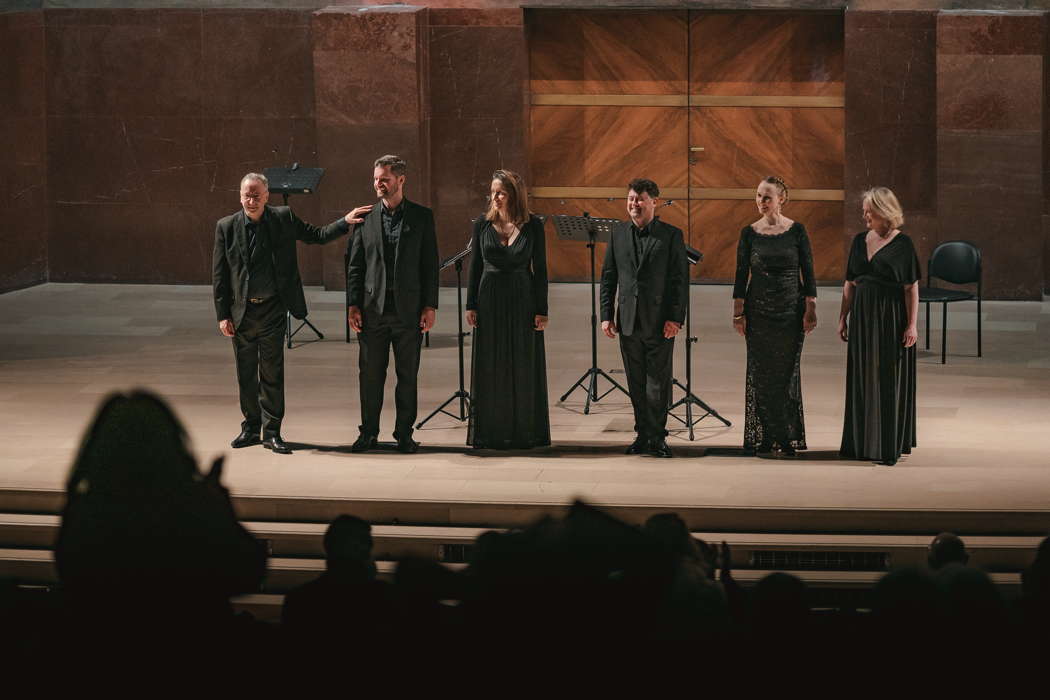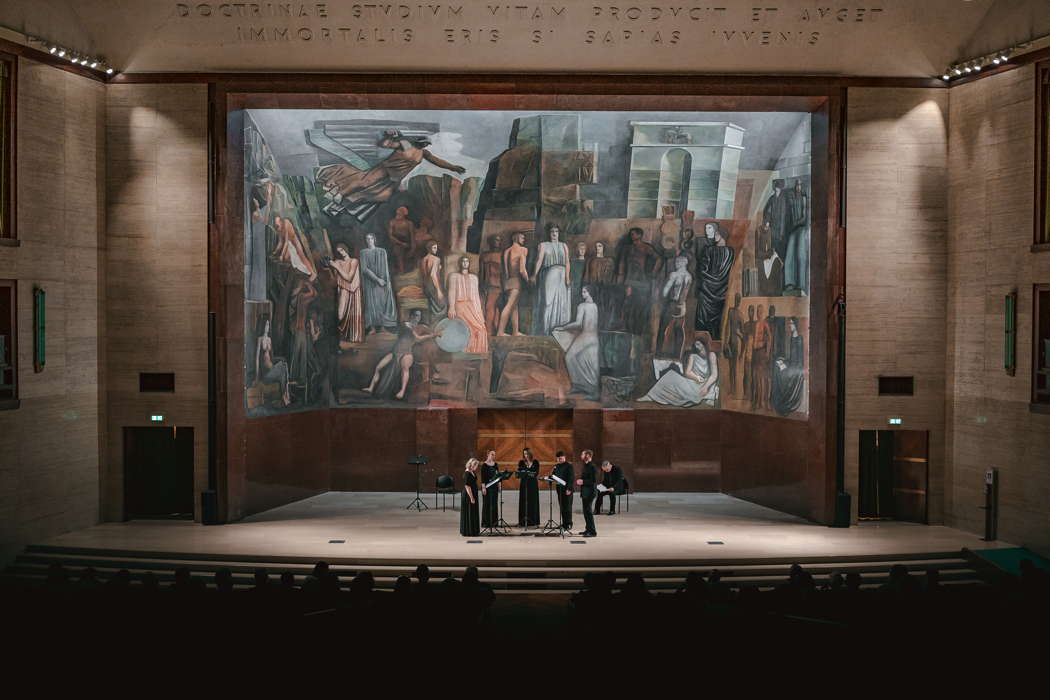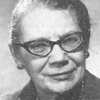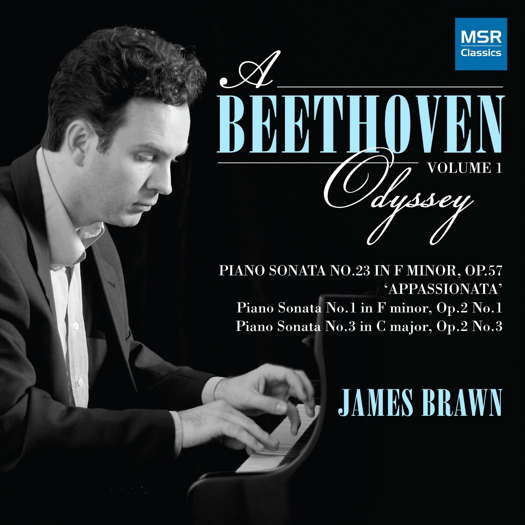Modern Madrigals in the Seventeenth Century
GIUSEPPE PENNISI listens to vocal music by Gesualdo and some of his contemporaries
On 12 and 15 February 2022, at the Istituzione Universitaria dei Concerti (IUC) in Rome, I attended two concerts that were the final part of the Gesualdo Project, started in 2019 and interrupted due to the pandemic. The project involved the complete rendering of the six books of madrigals by Prince Carlo Gesualdo da Venosa, integrated (and therefore compared) with madrigals by contemporary composers, as well as conferences, studies and research. The project may be resumed next year with the very rare performance of the sacred music by Carlo Gesualdo. The musical performance of the complete madrigals was entrusted to Les Arts Florissants, an international ensemble in residence at the Philharmonie in Paris; created in 1979 by Willam Christie, it is now directed by tenor Paul Agnew. The goal of the ensemble is to offer philological performances. The singers were Miriam Allan (soprano), Hanna Morrison (soprano), Mélodie Ruvio (alto), Sean Clayton (tenor) and Edward Grint (bass).

Paul Agnew and Les Arts Florissants on stage at the Aula Magna della Sapienza in Rome on 12 February 2022. Photo © 2022 Giuseppe Follacchio
The fifth and sixth books of madrigals have a significant characteristic compared to the others, which were published in Ferrara by the publisher Baldini between 1594 and 1596. The last two books instead were printed in the typography that Carlo Gesualdo had installed inside the castle where he had retired. The fifth includes, like the previous ones, twenty madrigals; the sixth, and last, features twenty three. Unlike the first four books, the madrigals of the last two books were composed by the prince on texts commissioned by him and only for himself and for his small circle of friends who faced a difficult journey to reach him at his castle not far from what is now Potenza. The publication took place a few years before his death, but they were published again posthumously, about two years after his death, in Genoa. This is a clear indication that they came out of the small group that frequented the castle and reached a wider audience.
When Carlo Gesualdo composed them, he had completed (in the previous four books) his research on the 'sonority of the word'. He chose, therefore, texts not based on the fame of the poets but entrusting them to versifiers often little known or even unknown who followed his indications as far as they dealt with care of the musicality of the word. He was wealthy and could afford to commission texts from famous poets (such as Torquato Tasso) without ever using them because they did not highlight the word as a 'sound event'.
Gesualdo also moved away from harmonic perfection and refined counterpoint in order to go more and more towards a new and then little-known path: chromaticism. This allowed him to develop a musical poetic that was increasingly personal as well as increasingly interior, a path that he could face thanks to his autonomy and his distance from patrons, the public and the musical schools. It is not only a question of some nuances in an essentially harmonic and contrapuntal structure but of a chromaticism that makes the madrigal lose the characteristic of being entertainment music for high society, full of refinement and melancholy, and makes it an instrument of introspection in the dark, as well as painful, ravines of the soul.
The fifth and sixth books of madrigals were published about fifteen years after the previous works. They are profoundly innovative: they do not seek the beauty and formal balance of the Renaissance, they do not express the elegance of the Baroque that was then being born; instead, the fusion between word and music becomes emotion and often a tormented feeling. They are a unicum in the panorama of the time. Gesualdo had few followers in the seventeenth century and remained largely forgotten until the twentieth century. He was rediscovered by Warlock and Stravinsky and then by Schnittke, Sciarrino, Eötvös and many others.
A general observation: the performance of the two books by Les Arts Florissants is less polished but more dramatic than that, for example, by the ensemble Delitiæ Musicæ, conducted by Marco Longhini available on a Naxos box set from about ten years ago. The spiritual torment of Carlo Gesualdo is accentuated (even in the choice of texts) and the chromaticism is more marked.
At the 12 February performance of the fifth book, at the beginning of the concert, two madrigals by Giovanni de Macque (c1550-1614) and one each by Pomponio Nenna (1556-1608) and Luzzasco Luzzaschi (1545-1607) were presented. While one of de Macque's madrigals has the strong sensual charge that characterizes, for example, the second and sixth madrigals by Carlo Gesualdo's fifth book, Pomponio Nenna's madrigal (Mercé, grido piangendo) has the same text as the eleventh madrigal of Gesualdo's fifth book. However, the Prince of Venosa treats the dramatic text with a strong chromaticism unlike Pomponio Nenna who accentuates the counterpoint.

Les Arts Florissants and Paul Agnew on stage at the Aula Magna della Sapienza in Rome on 12 February 2022. Photo © 2022 Giuseppe Follacchio
The performance of the sixth and last book of madrigals on 15 February was preceded by some short songs by Thomas Tomkins (1567-1656) and two short madrigals by Ettore Della Marra (1570-1634). Contemporary, therefore, to Gesualdo but different from him both for the themes chosen – the 'divine' character of music, the joys and sufferings of love – and for the emphasis on harmony and counterpoint. The sixth book has the contents and tones of a last will and testament: most of the madrigals deal with death (in three respects, the contemplation of death, the desire - almost carnal - of death, and the triumph of death), a couple (Madrigals 13 and 18) are almost descriptive of landscape, and the last three are amorous and sensual songs full of hope. The message is, perhaps, the joy of the afterlife after death, a completely unusual theme in the seventeenth century.
There is another important aspect, of a strictly musical nature: in the sixth book, madrigals with diatonic writing alternate with madrigals with a chromatic structure. In Les Arts Florissants' rendering this is more accentuated than in others as the chromaticism is dilated, expanded and even almost black and blue. It recalls some passages by Franz Schreker and Erich Wolfgang Korngold, two late romantic musicians of the first half of the twentieth century who, without a doubt, never had access to the music by Carlo Gesualdo. Les Arts Florissants clearly highlights innovation and experimentalism which remained unknown, rather than ignored, for over three centuries. This is especially evident in the short, concise Madrigal 17 (Moro, lasso, al mio duolo) in which all the themes of the book are almost summarized.
The main hall of La Sapienza University was full within the limits of the anti-COVID rules (which in university classrooms prescribe a maximum capacity of 50%). There was a great deal of applause at both concerts.
Copyright © 17 February 2022
Giuseppe Pennisi,
Rome, Italy

ARTICLES ABOUT THE ISTITUZIONE UNIVERSITARIA DEI CONCERTI




